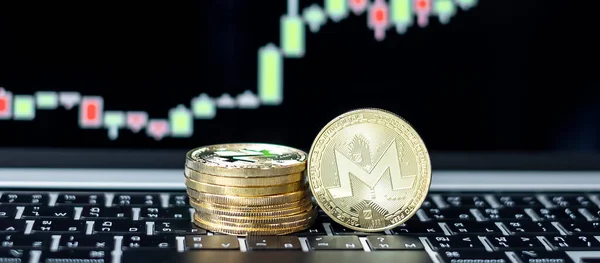In the world of cryptocurrencies and blockchain technology, a new phenomenon has emerged: Algorithmic Trading. As the crypto market becomes more mature and sophisticated, traders are leveraging algorithms and machine learning to optimize their trades. This article explores the opportunities and risks involved in algorithmic trading in the crypto market, the regulatory landscape, case studies of successes and failures, and the future of this intriguing phenomenon.
1. Unveiling the Phenomenon of Algorithmic Trading

Algorithmic trading, also known as algo-trading or black-box trading, utilizes complex algorithms to execute trades at high speeds and frequencies that would be impossible for a human trader. It is not a new phenomenon, having been widely adopted in more traditional financial markets. In the crypto market, however, it is still relatively nascent but rapidly gaining popularity. Algorithmic trading strategies can range from simple set-ups like moving average crossovers to sophisticated machine learning models that use a multitude of inputs. The primary appeal of algorithmic trading lies in its ability to make trading decisions based on pre-set rules, eliminating human emotions from the equation.
2. Delving into Algorithmic Crypto Trading: The Opportunities

Algorithmic trading in the crypto market offers several opportunities:
- Efficiency: Algorithms can analyze vast amounts of data and execute trades in fractions of a second, far outstripping human capabilities.
- Profitability: Algorithmic trading strategies can exploit market inefficiencies and arbitrage opportunities, potentially leading to higher profits.
- Diversification: Algo-trading can be applied to a wide range of cryptocurrencies, enabling a diversified portfolio.
- Risk management: Algorithms can be designed to exit trades or adjust positions when certain risk parameters are breached.
Despite these advantages, it’s essential to understand that profits are not guaranteed and algorithmic trading also carries risks.
3. Navigating the Risks of Algorithmic Trading in Crypto Market

The risks of algorithmic trading in the crypto market are substantial:
- Market volatility: The crypto market’s extreme volatility can lead to significant losses if algorithms are not designed to handle it.
- System failure: Technical glitches can result in erroneous trades or missed opportunities.
- Lack of transparency: Some algorithmic trading platforms do not provide full transparency, making it challenging to assess their effectiveness.
- Complexity: Developing and maintaining an algorithmic trading system requires advanced technical skills and significant resources.
It’s crucial for traders to thoroughly understand these risks before venturing into algorithmic trading.
4. Regulatory Landscape Affecting Algorithmic Crypto Trading

Regulation is a significant factor influencing the development of algorithmic crypto trading. In many jurisdictions, the legal status of crypto assets is unclear, and the use of algorithmic trading software may fall into regulatory gray areas. Regulatory bodies around the world, including the U.S. Securities and Exchange Commission (SEC) and the Financial Conduct Authority (FCA) in the UK, are closely scrutinizing algorithmic trading, and there is a high likelihood of further regulations in the future. These regulatory developments could impact the growth and adoption of algorithmic trading in the crypto market.
5. Case Studies: Successes and Failures in Algorithmic Crypto Trading

Several case studies illustrate the potential rewards and pitfalls of algorithmic crypto trading. On the upside, successful algo-traders have reported substantial profits, with some claiming annual returns of over 100%. On the downside, there are numerous examples of algorithmic trading systems failing spectacularly, leading to significant losses. For instance, in 2017, a glitch in a prominent crypto exchange’s trading algorithm resulted in a flash crash that temporarily reduced the price of Ethereum to $0.10. These case studies underscore the importance of robust risk management and contingency planning in algorithmic trading.
6. The Future of Algorithmic Trading in the Crypto Market

The future of algorithmic trading in the crypto market appears promising. As the crypto market continues to mature and become more efficient, the potential for algorithmic trading is likely to grow. Technological advancements, such as machine learning and artificial intelligence, could make algorithmic trading strategies even more sophisticated and profitable. However, the evolving regulatory landscape and the inherent unpredictability of the crypto market imply that the future of algorithmic trading is not without challenges.
In conclusion, algorithmic trading in the crypto market offers significant opportunities, from improved efficiency and potential profitability to enhanced risk management and diversification. However, it also carries substantial risks, including market volatility, system failures, and regulatory uncertainties. Therefore, traders considering algorithmic trading should thoroughly understand these factors, have robust risk management strategies in place, and stay informed about the latest regulatory developments. The future of algorithmic crypto trading, while promising, remains unpredictable, mirroring the very nature of the crypto market itself.






Understanding the regulatory landscape seems important for algo-trading.
It is good to know about the opportunities and risks of algo-trading.
The future of algorithmic trading looks both promising and challenging.
Case studies are useful to see real examples of successes and failures.
Algorithmic trading in crypto sounds exciting but also risky.
I am interested in how machine learning can improve trading strategies.
It is crucial to have robust risk management for algorithmic trading.
I did not know that algorithms can make trading decisions without emotions.